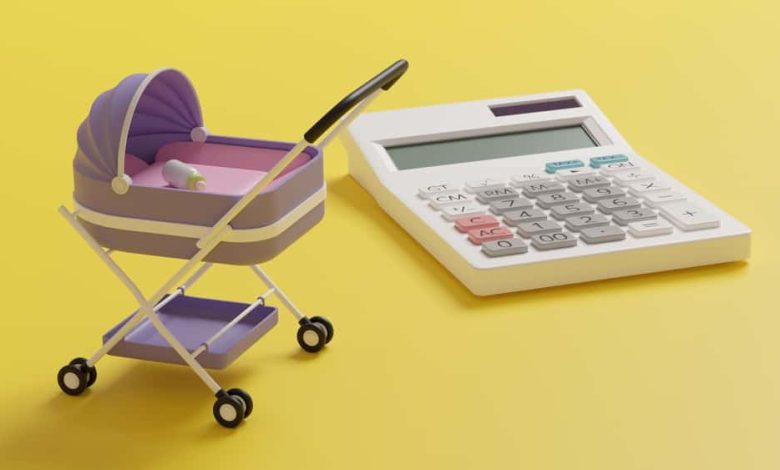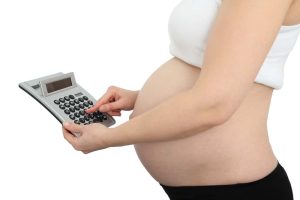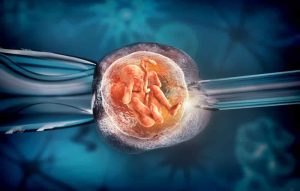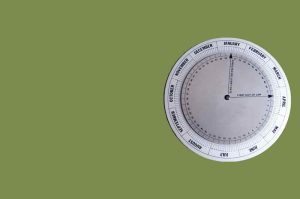New IVF Due Date Calculator: 2024 Latest Version

Guess what? Is your Baby arriving? When? – The (In-vitro Fertilization) IVF Due Date Calculator helps you figure out the approximate date when your Baby is getting born. Congratulation! You landed on a safe IVF and FET due date calculator.
With the help of this IVF due date calculator, you can quickly get the approximate pregnancy calendar and have your alert signs for a medical emergency.
Disclaimer
Our IVF due date calculator does not claim the clinical authenticity of professional doctors.
The measured data should not be considered clinically accurate and ready to be used by medical health professionals.
IVF Pregnancy Calculator
In contrast to natural conception, the IVF pregnancy calculator helps you extract some of the most commonly asked questions regarding In-Vitro Fertilization (IVF), Frozen Embryo Transfer (FET), and the pregnancy due dates through the artificial insemination processes.

There are typically four methods of accounting for the due date of your Baby’s born. The following table will provide the variables associated with the IVF pregnancy calculator, which will lend you the IVF transfer due date figures.
Natural Conception due Date V/S IVF Conception due Date – The former is less accurate than the latter one.
www.medicalgrantshelp.com
| Considerable Parameters in IVF Pregnancy Calculator |
|---|
| IVF Process with own egg Cycle |
| IVF Process with fresh donor’s egg Cycle |
| Fresh Donor Embryo Cycle |
| Frozen Embryo Transfer (3-Day FET) Cycle |
| Frozen Embryo Transfer (5-Day FET) Cycle |
IVF and FET due Date Calculator Formula Explanation
The average duration for a natural pregnancy is 40 weeks (280 Days) and may range between 36 weeks to 42 weeks depending on the mother’s age and health conditions. However, in the case of the IVF or FET due date calculator, the formulas vary based on different techniques.
- IVF Process with own Eggs
- Here, your eggs are retrieved first from your womb and then fertilized in-vitro, i.e., fertilization of your eggs occurs in the laboratory.
- Doctors consider your Egg Retrieval Date.
- Egg Retrieval Date + 266 Days or 38 weeks
- IVF Process with fresh donor’s egg Cycle
- Here, doctors get the egg from the egg bank or directly from the anonymous donor mother and then fertilize it with the intended father’s sperm or the donor’s sperm.
- Doctors consider your Egg Retrieval Date.
- Egg Retrieval Date + 266 Days or 38 weeks
- Fresh Donor Embryo Cycle
- Here, the doctor gets the anonymous donor’s egg and fertilizes it with the intended father’s sperm or the donor’s sperm.
- Doctors consider your Egg Retrieval Date.
- Egg Retrieval Date + 266 Days or 38 weeks
- Frozen Embryo Transfer (3-Day FET) Cycle
- Once the egg and sperm fertilization is done, the doctor transfers the frozen embryo into the uterus of the intended mother or a surrogate after three days of fertilization.
- The three days old embryo consists of merely 4 to 8 cells and initiates to grow faster. However, the embryo age is often not exact and may consider more than three days.
- It would help if you got the exact age of the embryo to have more approximation of dates.
- Embryo Transfer date + 266 days (or 38 weeks) – 3 days (for embryos)
- Frozen Embryo Transfer (5-Day FET) Cycle
- Once the egg and sperm fertilization, the doctor transfers the frozen embryo into the uterus of the intended mother or a surrogate after five days of fertilization.
- The five-day-old embryo comprises 70 to 100 cells, often called a blastocyst. Similarly, the blastocyst age is not exact and may consider more than three days.
- It would help if you got the exact age of the blastocyst to have more approximation of dates.
- Embryo Transfer date + 266 days (or 38 weeks) – 5 days (for blastocyst)
The trees that are slow to grow – bear the best fruit. – Molière

The trees that are slow to grow – bear the best fruit.
– Molière
You can save time with IVF Conceptions since your doctor can accurately know the date of conception as fertilization happens outside the natural uterus, unlike in natural conception, which is almost impossible to know when conception occurred.
However, the IVF calculator due date or the IVF due date is not calculated based on fertilization but on the embryo transfer date. So, with the help of IVF due dates, the expected onset of labor can be planned for the mother to be prepared in advance.
Also See: How Blue Cross Blue Shield IVF Coverage Benefits
How Accurate is the IVF Calculator Due Date?
We usually aim to be accurate, but when it comes to risk factors – we protect our audience against arbitrary information and ambiguous knowledge, especially when standing under the roof of medical science. We also aim to marginalize qualitative data regarding IVF Calculator Due Date here.
“A strong woman looks a challenge dead in the eye and gives it a wink.”
– Gina Carey

More often than ever, despite the correct information, the knowledge is what; we recommend you refer to some IVF scholarly articles if you’re here to get technical and intrinsic values about the subject and expect detailed clinical information in medical science.
Identify Effective IVF Pregnancy Due Date Calculator
With our IVF pregnancy due date calculator, you can manage to know your IVF due dates and plan for your labor day here, although identifying the best IVF due date calculator is not always easy and rather a concern of clinical errors.

Without using the IVF pregnancy due date calculator, you can note the first day of your last menstruation period as a reference point if you’re going to have a natural conception. But, in the case of the IVF pregnancy calculator, the techniques used are different.
You can calculate your estimated date of confinement (EDC) or IVF transfer due date based on the following custom conditional choices, which belong and applies to you.
- Natural Conception Date or Artificial Conception Date
- Artificial Conception (IUI/ICI/IVF/FET)
- IVF Date (Fresh Egg Retrieval)
- 3-Day FET Date (Fresh or Frozen)
- 5-Day FET Date (Fresh or Frozen)
You shall get the estimated date of confinement (EDC) along with the gestational age (GA). Usually, natural conception assumes that the conception occurs on day 14 of the menstrual cycle. It means the typical ovulating day is the 14 in the regular 28-day menstrual cycle.
Although, in the case of the artificial insemination processes under assisted reproductive techniques, the date of the embryo transferred into the uterus plays a role.
Embryo Transfer Due Date
Add 280 days on the first day of your last menstrual period (LMP); you can get the estimated date of confinement (EDC). This is how a natural conception date is derived using the pregnancy wheels. In the case of Artificial Insemination, the embryo transfer due date accounts for the chart.

However, two assumptions are made in the pregnancy wheel against the IVF due date calendar regarding the natural pregnancy – a 28-day regular menstrual cycle and ovulation on the 14th day. The frozen embryo transfer due date doesn’t require tracking the ovulation date.
Add 266 days to your frozen embryo transfer due date to get the IVF due date. In the case of a frozen embryo transfer due date, you can subtract the three days for 3-Day FET Date (Fresh or Frozen) or the five days for 5-Day FET Date (Fresh or Frozen) from the 266 days.
IVF due date calculator 5 day transfer is also influx into this bar, and you shall get the pregnancy due date IVF or FET based on your method of artificial conception.
IVF Due Date Calculator Twins Overview
Subtracting 21 days from the resulting date of confinement using the above rule of addition and subtraction, you can arrive at the estimated date of confinement (EDC) in case of dual gestation or twins. You can quickly get here IVF Due Date Calculator Twins and measure your EDC.
When it comes to triplets, the change in subtracting numbers is 21. Instead of 21, you subtract the 41 days from the resulting date of confinement using the above rule of addition and subtraction. You can arrive at the estimated date of confinement (EDC) in case of multiple gestation or triple gestation.
Conclusion
We’ve briefly discussed all the parameters related to the IVF due dates and have provided you here the IVF due date calculator; you can use it to know your pregnancy due date and plan accordingly for your upcoming months.
FAQs
How many weeks pregnant are you after IVF transfer?
You will have to add the 266 days to your egg retrieval date after IVF transfer with either your own eggs, the donor’s eggs, or a fresh donor’s embryo to get the estimated date of conception (EDC).
Are IVF babies born early?
Probable cases of preterm births in the records are more with IVF. The risk of early pregnancy increases near labor in 33rd to 37th gestational week. However, with the frozen embryo, the case is different.
Does IVF speed up pregnancy?
“Speed” should not be a parameter to play with such advanced treatment. You can’t play with the speed of nature. Doctors have observed a little early conception in IVF than natural pregnancy, but that’s not a narration to fly over IVF to get a baby in 2 days.
Does IVF affect due date?
Unlike natural conception, IVF doesn’t require tracking your ovulation or egg release. Your IVF due date is two weeks shorter as no two weeks of suffering are needed for ovulation, unlike the natural conception.
Are due dates more accurate with IVF?
There is an estimated date of conception (EDC), which can be considered more accurate with IVF than in natural pregnancy. But, there’s no accuracy in the medical treatment; there are predictions after safe or unsafe consequences.
